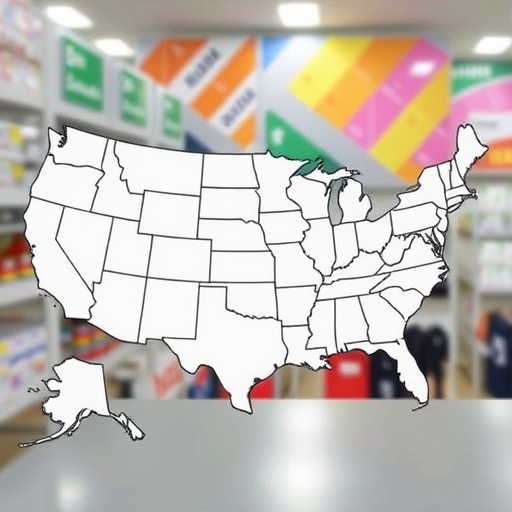States Issue Dire Warnings: SNAP Benefits Face Suspension as Government Shutdown Persists
In a stark escalation of the ongoing government shutdown, several states have issued urgent alerts, warning that SNAP benefits could be suspended as early as November 1 if Congress fails to resolve the impasse. This development threatens to plunge millions of low-income families into deeper financial and food insecurity, highlighting the human toll of prolonged political gridlock.
The Supplemental Nutrition Assistance Program (SNAP), formerly known as food stamps, provides critical monthly aid to over 42 million Americans, helping them purchase groceries and stave off hunger. With federal funding frozen due to the shutdown that began in late October, state administrators are scrambling to maintain services, but their reserves are dwindling fast. Officials in at least five key states—California, New York, Texas, Florida, and Illinois—have publicly stated that without congressional intervention, they will have no choice but to halt distributions, affecting an estimated 10 million recipients nationwide.
This crisis unfolds against a backdrop of partisan battles in Washington, where disagreements over budget priorities, immigration reform, and disaster relief funding have stalled negotiations. As families brace for the worst, advocacy groups are sounding alarms, calling on lawmakers to prioritize essential services like SNAP before the situation spirals further out of control.
Key States Sound Alarm on SNAP Disruptions
California, home to the nation’s largest SNAP caseload with over 5 million enrollees, was the first to issue a formal warning on October 28. State welfare officials, speaking at a press conference in Sacramento, emphasized that their emergency funds, designed to cover short-term federal lapses, will be exhausted by November 1. “We’re talking about real people—working parents, seniors, and children—who rely on these benefits to put food on the table,” said Maria Gonzalez, director of the California Department of Social Services. “A suspension isn’t just paperwork; it’s a recipe for hunger.”
In New York, where SNAP supports approximately 3 million residents, Governor Kathy Hochul convened an emergency meeting with federal liaisons, revealing that the state has already dipped into contingency reserves to issue October’s allotments. “The government shutdown is forcing our hand,” Hochul stated in a televised address. “If Congress doesn’t act, New Yorkers could see their EBT cards go empty next month, exacerbating the food deserts already plaguing urban and rural areas alike.”
Texas and Florida, both grappling with hurricane recovery efforts, face compounded challenges. Texas Comptroller Glenn Hegar warned that suspending SNAP could cost the state economy up to $2 billion in lost consumer spending, as recipients use benefits almost exclusively at local grocers. Florida’s Department of Children and Families echoed this, noting that 4 million Floridians depend on SNAP, with suspension looming if federal dollars don’t resume. Illinois, meanwhile, cited its high poverty rates in Chicago’s South Side, where SNAP usage tops 20% of households, as a flashpoint for potential unrest if benefits are cut.
These states aren’t acting in isolation; a coalition of 15 governors has penned a letter to Congress, urging immediate passage of a continuing resolution to avert the crisis. The letter details how SNAP’s administrative costs, typically borne by the federal government, have forced states to redirect funds from other vital programs like Medicaid and child welfare.
Families on the Edge: Real Stories from SNAP Recipients
The abstract threat of suspension hits hardest at the grassroots level, where everyday Americans are already stretched thin by inflation and rising grocery prices. Take Sarah Jenkins, a single mother of two in Los Angeles, who spoke to reporters outside a local food bank. “SNAP is my lifeline—$200 a month keeps my kids from going to bed hungry,” Jenkins shared, her voice trembling. “If it’s suspended because of this shutdown, I don’t know what we’ll do. We’ve already cut back on everything.”
Statistics paint a grim picture. According to the USDA’s latest data, SNAP lifted 8.4 million people out of poverty in 2022, with child poverty rates dropping by 45% in participating households. Yet, during past shutdowns—like the 35-day impasse in 2018-2019—states managed brief continuations through borrowing, a tactic no longer viable amid depleted reserves post-COVID recovery. The Center on Budget and Policy Priorities (CBPP) estimates that a one-month SNAP halt could increase food insecurity by 25% among low-income families, leading to higher emergency room visits for malnutrition-related issues.
In rural Texas, farmer and SNAP user Miguel Rodriguez described the ripple effects. “I grow produce, but I need SNAP to buy what I can’t grow,” he said. “Without it, small stores in my town will close, and jobs will vanish.” Advocacy organizations like Feeding America report that 1 in 8 Americans already faces hunger, and a SNAP suspension could push that to 1 in 6, particularly in Southern states where benefit uptake is high but support networks are thin.
Experts warn of broader societal impacts. Dr. Emily Carter, a nutrition policy analyst at the Urban Institute, noted in an interview, “Benefits like SNAP aren’t charity; they’re an investment. Every dollar spent generates $1.50 in economic activity. Cutting them now would be shortsighted and devastating.” Her research highlights how previous disruptions led to a 15% spike in school absenteeism among affected children, underscoring the long-term educational costs.
Congressional Gridlock: The Politics Fueling the SNAP Crisis
At the heart of this turmoil is a deeply divided Congress, where Republicans and Democrats remain deadlocked over spending priorities. The current government shutdown, now in its 10th day, stems from disputes over a $6 trillion omnibus bill that includes funding for border security, climate initiatives, and Ukraine aid. House Speaker Mike Johnson has vowed not to budge on conservative demands, while Senate Majority Leader Chuck Schumer accuses the GOP of holding essential services hostage.
“This isn’t about policy differences; it’s about extremism,” Schumer declared on the Senate floor, pointing to SNAP as a prime example of bipartisan success. Historically, Congress has renewed SNAP funding with little fanfare, but the shutdown has frozen the Farm Bill extension that underpins the program. A bipartisan group of 50 lawmakers, led by Senators Debbie Stabenow (D-MI) and John Boozman (R-AR), introduced emergency legislation on October 30 to exempt SNAP from shutdown impacts, but it faces uphill odds in a polarized chamber.
Lobbyists from the food industry are piling on pressure. The National Grocers Association sent a letter to Capitol Hill, warning that SNAP suspensions could bankrupt independent stores, which serve 40% of rural SNAP users. “States are our partners in this, but without federal backing, the whole system collapses,” said association president Gregg Orton.
Political analysts suggest the timing—mere weeks before midterm elections—could force a breakthrough. Polling from Pew Research shows 68% of voters view the shutdown negatively, with independents particularly concerned about social safety nets like SNAP. Yet, hardliners on both sides show no signs of relenting, leaving states to bear the brunt.
Navigating the Fallout: How SNAP Operates in Shutdown Scenarios
Understanding SNAP’s mechanics reveals why this crisis is so acute. Administered by the USDA’s Food and Nutrition Service, the program allocates federal funds to states for benefit issuance via Electronic Benefit Transfer (EBT) cards. During normal operations, states receive 50% reimbursement for administrative costs, but shutdowns halt these payments, forcing governors to use state budgets or federal loans.
In the 2013 shutdown, 13 states issued IOUs to vendors, while others like Utah borrowed $5 million to keep SNAP flowing. This time, however, post-pandemic fiscal strains have left slimmer margins. The USDA has guidance allowing states to certify eligibility for up to three months without federal approval, but funding for actual benefits requires congressional appropriation.
Nonprofits are stepping in where possible. The Emergency Food Assistance Program (TEFAP), which distributes surplus USDA commodities, has seen a 30% demand surge since the shutdown began. Organizations like World Central Kitchen are mobilizing mobile pantries in affected areas, but experts agree these are stopgaps. “TEFAP helps, but it can’t replace SNAP’s scale,” said Feeding America’s CEO Claire Babineaux-Fontenot. “We need Congress to end this now.”
Legal challenges are emerging too. The National Association of State Food Banks filed a lawsuit on October 31, arguing that SNAP’s essential nature exempts it from shutdown rules under the Antideficiency Act. While symbolic, such actions underscore the desperation felt across the board.
Looking Ahead: Pathways to Resolution and Lasting Reforms
As November 1 approaches, pressure mounts for a swift end to the government shutdown. Bipartisan talks, brokered by President Biden’s administration, are slated for November 2, with SNAP funding as a top agenda item. If resolved, states could receive retroactive payments, minimizing disruptions. However, prolonged delays might trigger a cascade: increased welfare rolls, strained food banks, and economic drags estimated at $11 billion monthly by the Joint Economic Committee.
Long-term, this episode spotlights vulnerabilities in federal safety nets. Policy experts advocate for SNAP reforms, such as automatic continuations during lapses or dedicated trust funds, similar to Social Security. The CBPP proposes tying SNAP to the debt ceiling to prevent future weaponization in budget fights. States, meanwhile, are exploring innovations like expanded summer EBT programs, piloted in 35 states last year, which delivered $4.3 billion in benefits to 21 million children.
For families like the Jenkins and Rodriguezes, the wait is agonizing. Advocacy campaigns, amplified on social media with hashtags like #FundSNAPNow, are rallying public support. As Congress deliberates, the stakes couldn’t be higher: restoring benefits isn’t just fiscal—it’s a matter of dignity and survival for millions of Americans counting on this lifeline.










